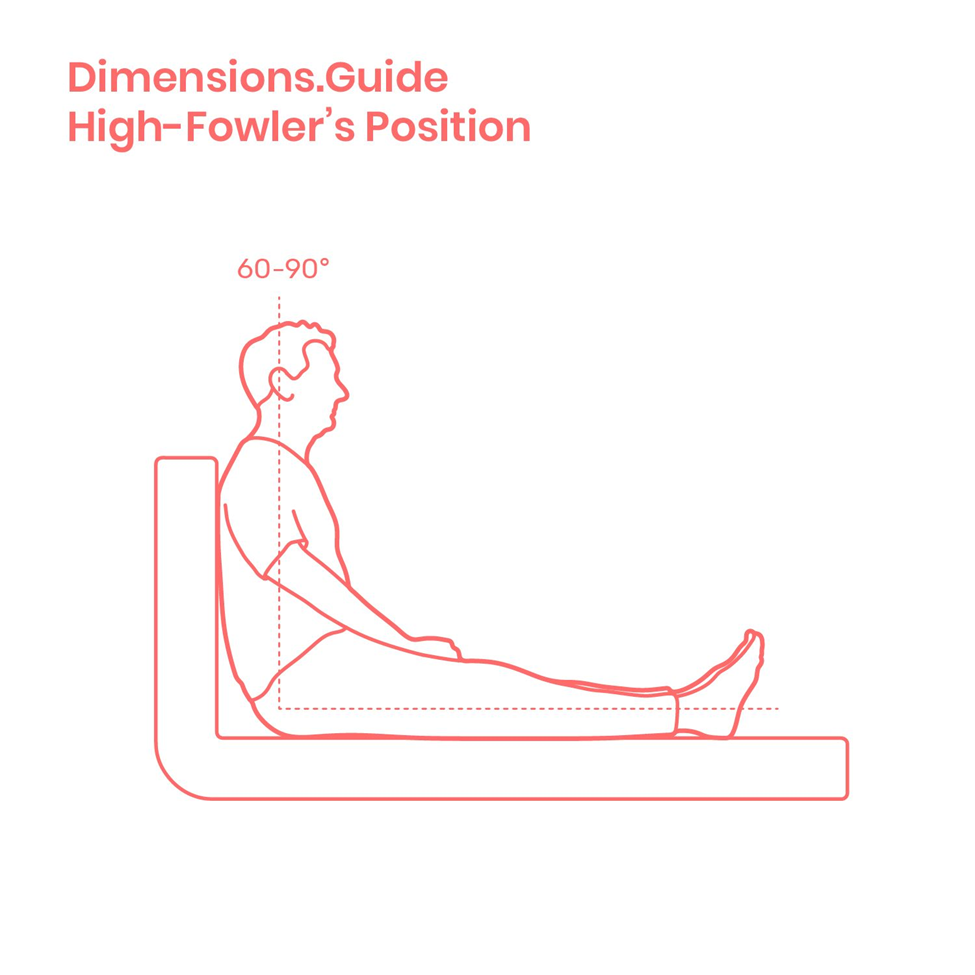The physician’s admitting orders indicate that the client is to be placed in a High Fowler’s position. Upon positioning this client, how much will the nurse elevate the head of the bed?
30 degrees.
15 to 20 degrees.
90 degrees.
45-60 degrees
The Correct Answer is C
A. 30 degrees:
This angle does not meet the criteria for a High Fowler's position, which requires a more upright position.
B. 15 to 20 degrees:
This angle is lower than what is generally considered as High Fowler's position. High Fowler's is a more upright position.
C. 90 degrees:
High Fowler's position involves elevating the head of the bed to 90 degrees. This position is often used for better lung expansion and respiratory function.
D. 45-60 degrees:
While this range is higher than a semi-Fowler's position, it is not as upright as the 90-degree elevation in a High Fowler's position.

Nursing Test Bank
Naxlex Comprehensive Predictor Exams
Related Questions
Correct Answer is A
Explanation
A. Make sure the bed is low, locked, and the call light is in reach of the patient:
This action is crucial for preventing falls. A low bed reduces the risk of injury if the client were to accidentally fall. Locking the bed prevents unintended movement, and ensuring the call light is within reach allows the client to call for assistance if needed.
B. Ask the client if they have ordered their dinner:
While nutrition is important, it is not the immediate priority after assisting the client back to bed. Safety measures should be addressed first.
C. Educate the client on the surgical procedure they are scheduled for in the morning:
While pre-operative education is important, it is not the immediate concern after assisting the client back to bed. Safety measures for the current situation take precedence.
D. Check that the client is wearing non-skid socks while in bed:
While wearing non-skid socks is a safety measure, ensuring the bed is low, locked, and the call light is accessible is a more immediate and critical action after assisting the client back to bed.
Correct Answer is C
Explanation
A. Comatose:
A comatose state is characterized by an unarousable and unresponsive condition. Individuals in a coma do not respond to external stimuli, including shaking or calling their name.
B. Stuporous:
Stupor is a state of near-unconsciousness or insensibility. A stuporous patient may require more intense stimulation to achieve a response than someone who is lethargic.
C. Lethargic:
Lethargy is a state of drowsiness or fatigue. Lethargic patients may appear drowsy but can be awakened by gentle stimulation, such as shaking and calling their name.
D. Awake and Alert:
An awake and alert state implies full responsiveness, awareness, and orientation to the environment. The patient in the scenario does not fit this description.
Whether you are a student looking to ace your exams or a practicing nurse seeking to enhance your expertise , our nursing education contents will empower you with the confidence and competence to make a difference in the lives of patients and become a respected leader in the healthcare field.
Visit Naxlex, invest in your future and unlock endless possibilities with our unparalleled nursing education contents today
Report Wrong Answer on the Current Question
Do you disagree with the answer? If yes, what is your expected answer? Explain.
Kindly be descriptive with the issue you are facing.
